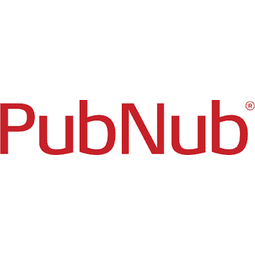Technology Category
- Analytics & Modeling - Real Time Analytics
- Cybersecurity & Privacy - Security Compliance
Applicable Industries
- Healthcare & Hospitals
- National Security & Defense
Applicable Functions
- Quality Assurance
Use Cases
- Real-Time Location System (RTLS)
- Tamper Detection
About The Customer
MaNaDr is a healthcare provider that aims to modernize patient-doctor interactions by providing real-time access to healthcare services. The company sought to create a platform where patients could receive virtual diagnosis, screenings, consultations, and schedule appointments with doctors. MaNaDr's goal was to provide a secure, compliant, and reliable solution that would enable real-time two-way communication between patients and doctors. The company's innovative approach to healthcare, particularly in the wake of the COVID-19 pandemic, has made it a trusted name in the telemedicine sector.
The Challenge
MaNaDr, a healthcare provider, was faced with the challenge of meeting the growing demand for modern, real-time access to healthcare services. The company aimed to provide a platform where patients and doctors could interact for virtual diagnosis, screenings, consultations, and scheduling. However, the criticality of information, privacy concerns, and regulatory requirements posed significant hurdles. The solution needed to be secure, compliant, and reliable, enabling real-time two-way communication. The challenge was to find a solution that could meet all these requirements without compromising on any aspect.
The Solution
MaNaDr found its solution in PubNub Chat, which provided a reliable and compliant chat platform. This allowed the healthcare provider to quickly connect patients with doctors, regardless of their location. PubNub's 99.999% uptime SLA and global 250 ms latency ensured that messages between patients and doctors were delivered without fail. After evaluating other options like SendBird and Pusher, MaNaDr chose PubNub Chat for its comprehensive package. The solution enabled not just chat, but also remote consultations, appointment scheduling, telelab results, homecare, news, and more. With the spread of COVID-19, MaNaDr's telemedicine approach, powered by PubNub Chat, became instrumental in providing comfortable care from home.
Operational Impact
Quantitative Benefit

Case Study missing?
Start adding your own!
Register with your work email and create a new case study profile for your business.
Related Case Studies.

Case Study
Hospital Inventory Management
The hospital supply chain team is responsible for ensuring that the right medical supplies are readily available to clinicians when and where needed, and to do so in the most efficient manner possible. However, many of the systems and processes in use at the cancer center for supply chain management were not best suited to support these goals. Barcoding technology, a commonly used method for inventory management of medical supplies, is labor intensive, time consuming, does not provide real-time visibility into inventory levels and can be prone to error. Consequently, the lack of accurate and real-time visibility into inventory levels across multiple supply rooms in multiple hospital facilities creates additional inefficiency in the system causing over-ordering, hoarding, and wasted supplies. Other sources of waste and cost were also identified as candidates for improvement. Existing systems and processes did not provide adequate security for high-cost inventory within the hospital, which was another driver of cost. A lack of visibility into expiration dates for supplies resulted in supplies being wasted due to past expiry dates. Storage of supplies was also a key consideration given the location of the cancer center’s facilities in a dense urban setting, where space is always at a premium. In order to address the challenges outlined above, the hospital sought a solution that would provide real-time inventory information with high levels of accuracy, reduce the level of manual effort required and enable data driven decision making to ensure that the right supplies were readily available to clinicians in the right location at the right time.

Case Study
Gas Pipeline Monitoring System for Hospitals
This system integrator focuses on providing centralized gas pipeline monitoring systems for hospitals. The service they provide makes it possible for hospitals to reduce both maintenance and labor costs. Since hospitals may not have an existing network suitable for this type of system, GPRS communication provides an easy and ready-to-use solution for remote, distributed monitoring systems System Requirements - GPRS communication - Seamless connection with SCADA software - Simple, front-end control capability - Expandable I/O channels - Combine AI, DI, and DO channels

Case Study
Driving Digital Transformations for Vitro Diagnostic Medical Devices
Diagnostic devices play a vital role in helping to improve healthcare delivery. In fact, an estimated 60 percent of the world’s medical decisions are made with support from in vitrodiagnostics (IVD) solutions, such as those provided by Roche Diagnostics, an industry leader. As the demand for medical diagnostic services grows rapidly in hospitals and clinics across China, so does the market for IVD solutions. In addition, the typically high cost of these diagnostic devices means that comprehensive post-sales services are needed. Wanteed to improve three portions of thr IVD:1. Remotely monitor and manage IVD devices as fixed assets.2. Optimizing device availability with predictive maintenance.3. Recommending the best IVD solution for a customer’s needs.

Case Study
HaemoCloud Global Blood Management System
1) Deliver a connected digital product system to protect and increase the differentiated value of Haemonetics blood and plasma solutions. 2) Improve patient outcomes by increasing the efficiency of blood supply flows. 3) Navigate and satisfy a complex web of global regulatory compliance requirements. 4) Reduce costly and labor-intensive maintenance procedures.

Case Study
Cloud-based healthcare solution for Royal Philips
Royal Philips wanted to launch its cloud-based healthcare solution HealthSuite Digital Platform in China to deliver services to help cope with challenges related to urbanization and population growth. Philips wanted to achieve this goal by combining mobile, cloud computing and big data technologies. To bring this platform and product to market, Philips required cloud computing and local technical service capabilities in China, in addition to a flexible IT infrastructure that could handle user requests.








